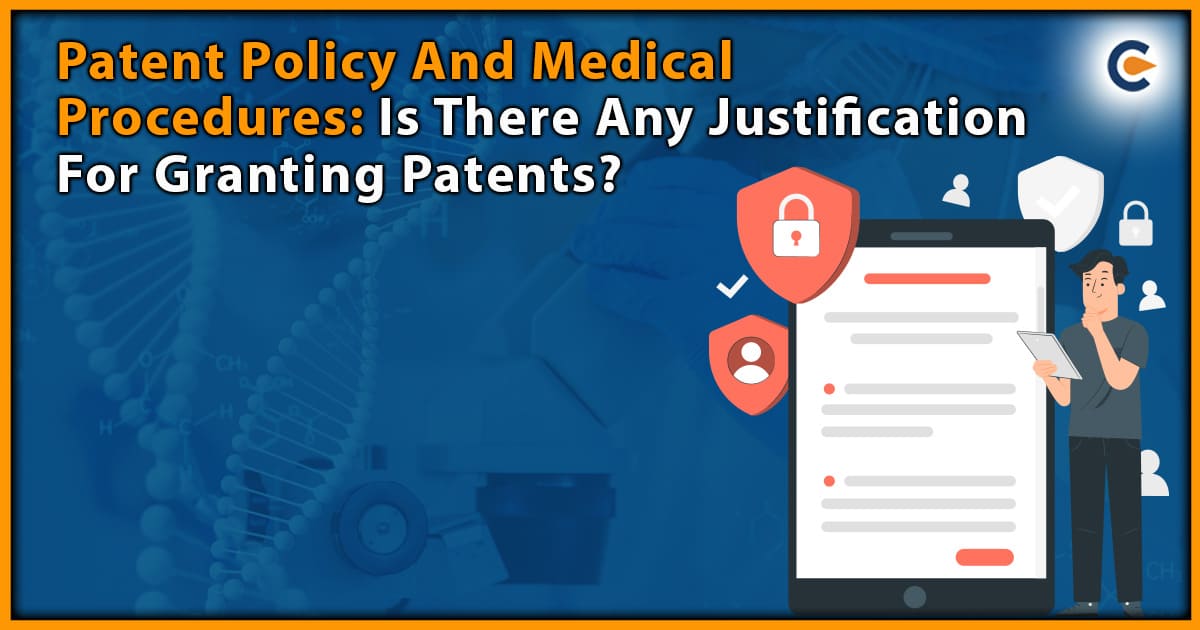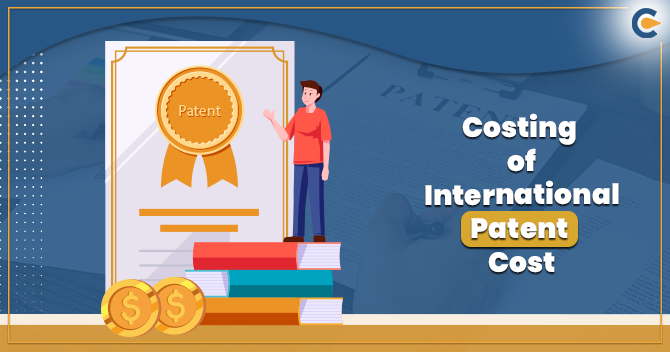The debate surrounding the patentability of medical procedures has been ongoing for years, with ethical and economic concerns being the main drivers of discussions. While patents have been granted to inventors of innovative medical procedures to validate their work and provide incentives, recent years have seen a growing distrust of the practice. Critics argue that patents hinder the equal distribution of knowledge and information about life-saving procedures. Some countries have banned patents for medical operations, primarily surgical and therapeutic treatments, due to the controversy around specific claims on medical treatments. The main argument against patent protection for medical procedures is that it goes against the philanthropic nature of medical professionals, who are responsible for sharing new knowledge and technologies for the greater welfare of society.
Why is Patenting Medical Procedures Important?
The patenting of medical procedures has been justified by economic incentives for inventors, fueling research and development of innovative procedures. It also allows for a monopoly on the procedure, ensuring profitability for the inventor. Without patent protection, prices may fall to the point where innovators have no incentive to create new procedures, resulting in a loss of innovation. Demand and supply have also played a role in the frequency of medical procedure patents. However, critics argue that medical procedures should not be patented because they involve human life, and sharing knowledge and innovation is necessary for the greater good of society. Patents can also create barriers to access to life-saving treatments and exclude the less affluent. Some countries have banned patents for medical procedures altogether, including surgical and therapeutic methods, and only permit diagnostic models to be patented. The issue of patenting medical procedures remains contentious and requires a delicate balance between incentivizing innovation and ensuring equitable access to life-saving medical procedures.
The Debate on Patentability of Medical Procedures: Perspectives from India, USA, UK and Australia
The patentability of medical procedures has been the subject of ethical and economic debates for decades. In the United States alone, around 15 medical procedures were patented every week in the past, providing validation and incentives for inventors. However, recent years have seen a growing distrust of the patentability of medical procedures, and surgical and therapeutic methods have been excluded from patent protection, with only diagnostic models allowed as patentable subject matter. Critics argue that patenting medical procedures is an unjustifiable means of incentivizing inventors and hinders the equal distribution of knowledge and information about life-saving procedures. The philanthropic nature of medical professionals is also said to be violated by patent protection of medical procedures. Wendy Yang argues that medical procedure patents protect innovative procedural steps but not any medical devices used in the procedure.
The patentability of medical procedures is a contentious topic worldwide, and many countries have banned or limited patent protection on medical procedures. Critics argue that allowing patents on medical procedures violates medical professionals’ altruistic nature and inhibits disseminating of new procedural data and information. The ethical and economic implications of the patentability of medical procedures have driven discussions on the topic worldwide. In conclusion, while medical procedure patents have been granted in the past, recent trends suggest that the practice is declining. The issue remains the subject of ongoing debates and discussions.
India:
In India, the patenting of medical procedures was banned until 2005. After 2005, only new medical procedures with therapeutic efficacy that satisfied the criteria of novelty, inventive step, and industrial applicability were patentable.
Based on the Patent Act of 1970[1] in India, any medical or surgical treatment for plants, animals, or humans intended to make them disease-free or increase/decrease their economic value cannot be patented. However, the Patents (Amendment) Act of 2002 made any procedure for treating plants patentable. Despite this change, therapeutic and diagnostic procedures remain excluded from patentability.
The Lalit Mahajan patent application dealt with whether a method for detecting the presence of antibodies in human plasma is covered under Section 3 of the Patent Act. The Patent Examiner determined that the invention was a device rather than a procedure or method, making the opposition’s contention unsustainable.
The Novartis case in India brought the pharmaceutical industry under the purview of patent law and set a significant precedent for accessibility to medications. The decision prioritized social justice over commercial interests and benefitted India’s local industries while still upholding global intellectual property commitments. It was the first time that India had enacted a drug patent ban with minimal modifications to an existing one.
India views the procedure of medical treatment exclusion broadly, leading to a higher percentage of medical innovations being excluded from patentability. Overall, India’s approach to patent policy in the medical field prioritizes accessibility to healthcare and local industry development over commercial interests.
UK:
The UK also had a similar ban on patenting medical procedures until 1997. After that, the UK allowed for patenting specific medical procedures, but only if they met novelty, inventive steps, and industrial applicability criteria.
Since the inception of patent law in the UK, it has been necessary for an invention, idea or method to have “industrial applicability” in order to be eligible for patenting. Medical procedure patents were excluded from this requirement as they were deemed to lack industrial applicability and were also considered to be a violation of ethical principles. The Parliament later amended the Patents Act of 1977 to align with the European Patent Convention, but it still prohibits medical procedure patents for diagnostic, therapeutic, and surgical processes.
USA:
In the USA, any innovative and economically beneficial technique, equipment, or manufacturing is patentable under the law. While medical procedure patents are granted, there is no specific legal action provision in case of a violation. This means enforcing it is impossible while the inventor may have a monopoly. The Court established this rule after the Ex parte Brinkerhoff, Ex parte Scherer, and Pallin cases. In the Pallin case, the Court overturned the first two cases, recognizing a greater responsibility to balance public health with social benefit and imposing limitations on the patentability of medical, surgical, and therapeutic processes.
Australia:
The patentability of medical procedures has been controversial in Australia. Medical procedures involving medical devices or pharmaceuticals are patentable, but surgical and therapeutic methods are generally not.
Before the 1977 Patents Act, Australian patent law did not explicitly prohibit the patenting of medical treatment procedures, but it was left to the courts to decide. However, both Australia and the UK have since changed their laws to exclude medical procedures from patent protection. In Australia, courts have the power to determine whether an invention is “particularly undesirable,” and critics argue that patenting medical procedures is usually inconvenient. In the case of Anaesthetic Supplies Pty Ltd v Rescare Ltd, the Federal Court held that patenting medical procedures were not usually problematic. The issue was again raised in Bristol Myers Squibb Co v F H Faulding & Co Ltd, in which the judges disagreed on whether medical procedures could be patented.
Criticism and Issues Associated with Patent Protection of Medical Procedures
Medical procedure patents have been controversial for many years, with critics raising concerns about the ethical, societal, and human rights implications of granting such patents. One of the main concerns is the potential conflict between medical practitioners’ ethical responsibilities and the patenting of medical procedures. Governments often refuse medical procedure patents based on moral and rational considerations rather than scientific or technological ones because they may not be affordable to some patients and may limit the spread of knowledge and information.
Critics also argue that medical procedure patents could harm the relationship between doctors and patients. If a medical procedure is patented, a doctor’s judgment in treating patients could be influenced by the nature of the patented procedure, which could be harmful to the patient. Furthermore, applying licensing fees or royalties to exclusive monopolies can increase the financial burden, especially for those who require modified therapy.
Another concern is that granting medical procedure patents may result in unjustified monetary benefits for inventors and private firms. Critics argue that doctors should undoubtedly be rewarded for their innovations, but not just financially. Medical procedure patents may lead to situations where inventors and private firms invest in procedures where patents are almost expected to be awarded. It could lead to a need for more incentives for doctors to innovate.
The fear of violation or infringement is also among the most serious concerns raised by critics of medical procedure patents. In emergency situations, doctors who perform a patented medical treatment will be protected under the current equitable principle of necessity. However, critics argue that it is difficult to envision a doctor refusing to perform an emergency procedure out of fear of patent infringement. The issue is that when it comes to the patentability of non-emergency operations, the “fear of infringement” argument holds little significance on its own.
Reasons and Justification for Patent Applicability in Medical Procedures
In the past, patent laws allowed for the patenting of surgical, diagnostic, and therapeutic procedures as a way to encourage innovation, provide financial rewards, and grant a monopoly over specific operations. The justification for patents on medical procedures was that physicians would be more likely to accept a procedure if they thought they would be awarded a patent for it. However, there are ethical concerns about patent granting and the potential harm it could cause to society.
The cost of medical procedures has been one of the biggest issues with patents. For example, the cost of removing polyps from a body was so high that it was not widely available throughout the country. Monopoly on techniques meant that innovators could use and commercialize their innovation in any way they wanted in the economy. Still, it has been extensively challenged as incorrect due to a need for more clarity in defining different procedures. If basic operations like open-heart surgery had to be patented, and there were limited patents for these treatments, millions of people would die, and the health of society at large would be compromised.
While there are ethical concerns about patent granting, these considerations do not always outweigh the advantages of granting a patent. Without a patent, a physician’s only options are to publish the innovation in academic publications, give presentations at a clinical symposium, or retain the innovation as a trade secret. However, the preferred option is to change the current patent laws to require mandatory licensing of patents for medical procedures. This would address the numerous concerns posed by medical method patenting.
Credit and Recognition:
Physicians resorted to patenting their medical procedure inventions because they were not receiving recognition through scholarly journals. This lack of credit could have been avoided if the medical profession had provided adequate recognition for innovations and achievements. If publishing becomes challenging and patent protection is no longer possible, doctors may choose to keep their ideas as trade secrets, which could lead to a method patent dispute.
Trade Secrets and Patents:
Keeping information confidential is the main objective of trade secrets, while patents require the disclosure of an idea to the public and give the patent owner the authority to prohibit others from using or distributing the invention for a certain time period in return for sharing the information. If healthcare aims to have information readily available throughout the medical community, patents may be more beneficial. Furthermore, to address the various concerns regarding medical method patenting, one possible solution is to revise existing laws to mandate the licensing of patents.
Conclusion
The patentability of medical procedures is a complex issue. A unified position is needed based on the TRIPS agreement and WMA meetings to balance public health and social gain for inventors. Compulsory licensing should be necessary for life-saving or effective procedures, and any reform should promote transparency and a well-defined framework. A mandatory licensing scheme could provide fair compensation to physician inventors while increasing accessibility to patented methods and reducing biased reporting and infringement cases. It would lead to fewer investigations into patients’ medical records and improve physician-patient relationships.
Read Our Article: Detailed Process Of Patent Registration In India











